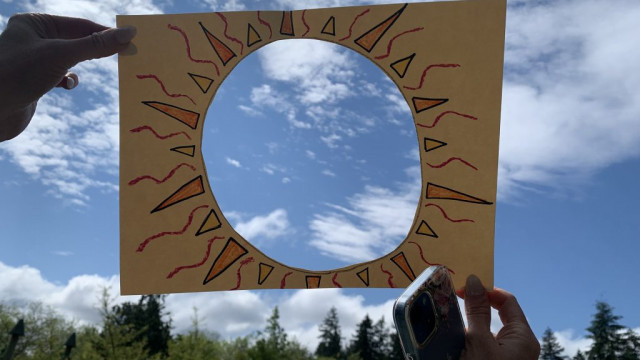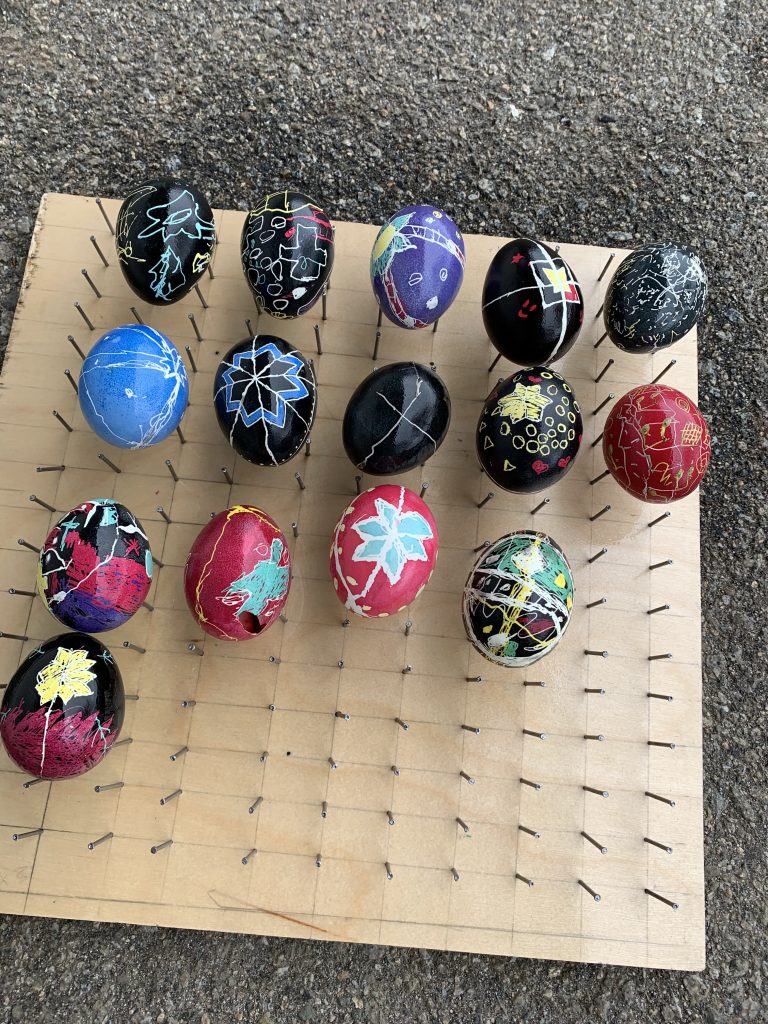
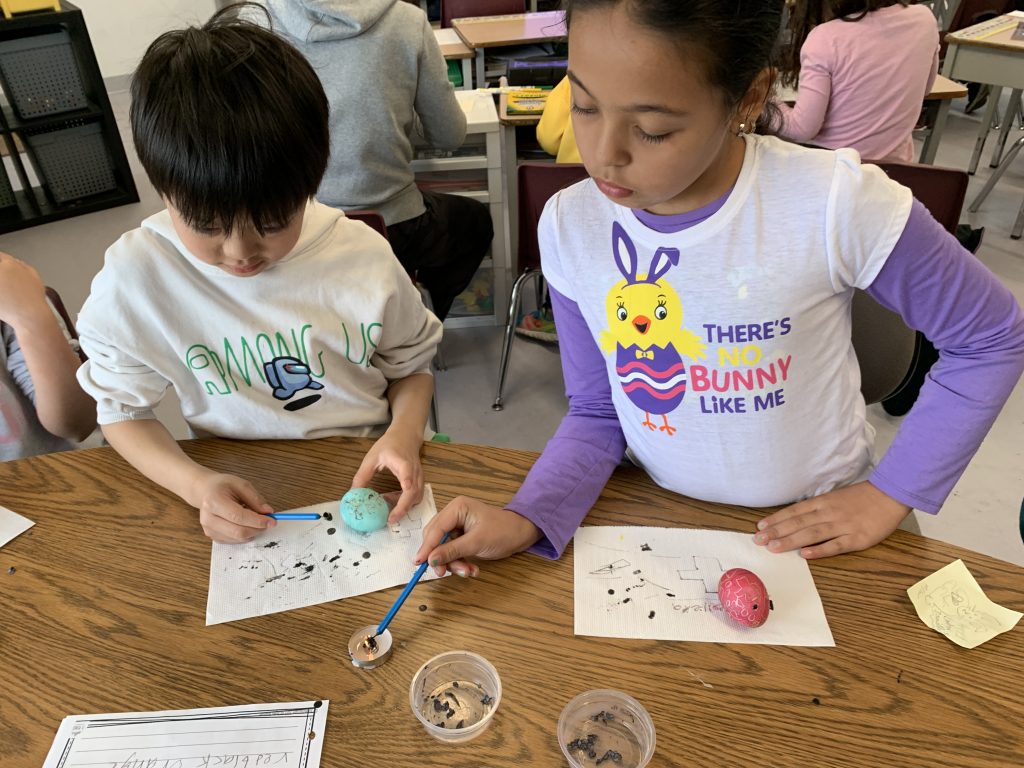
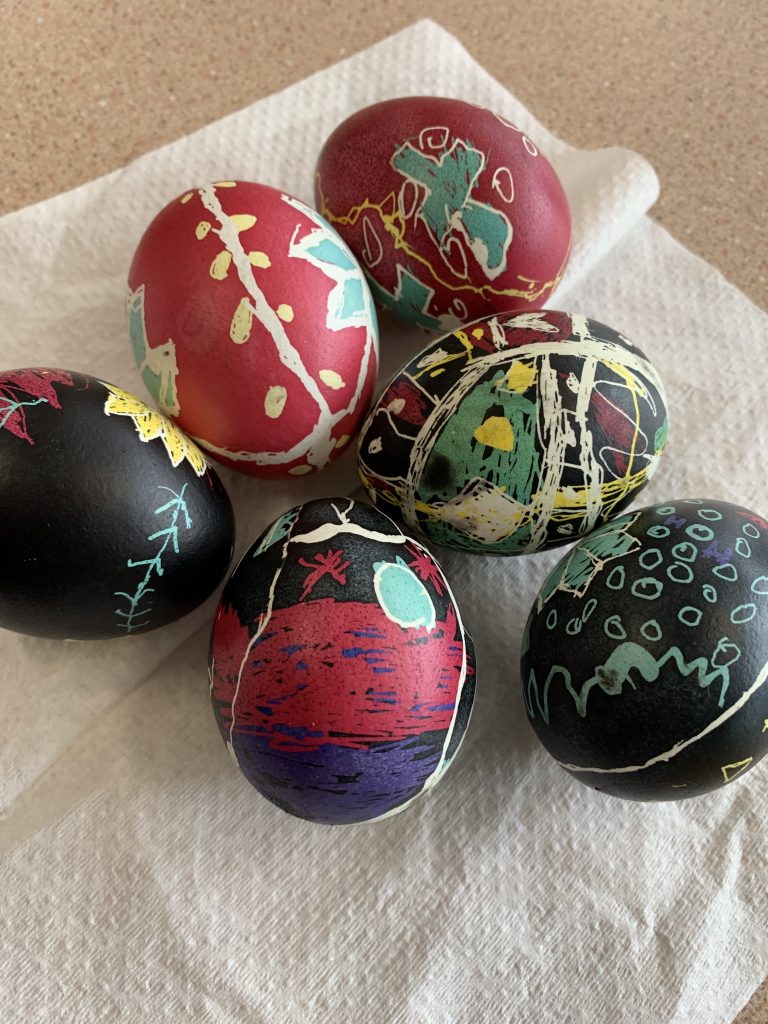
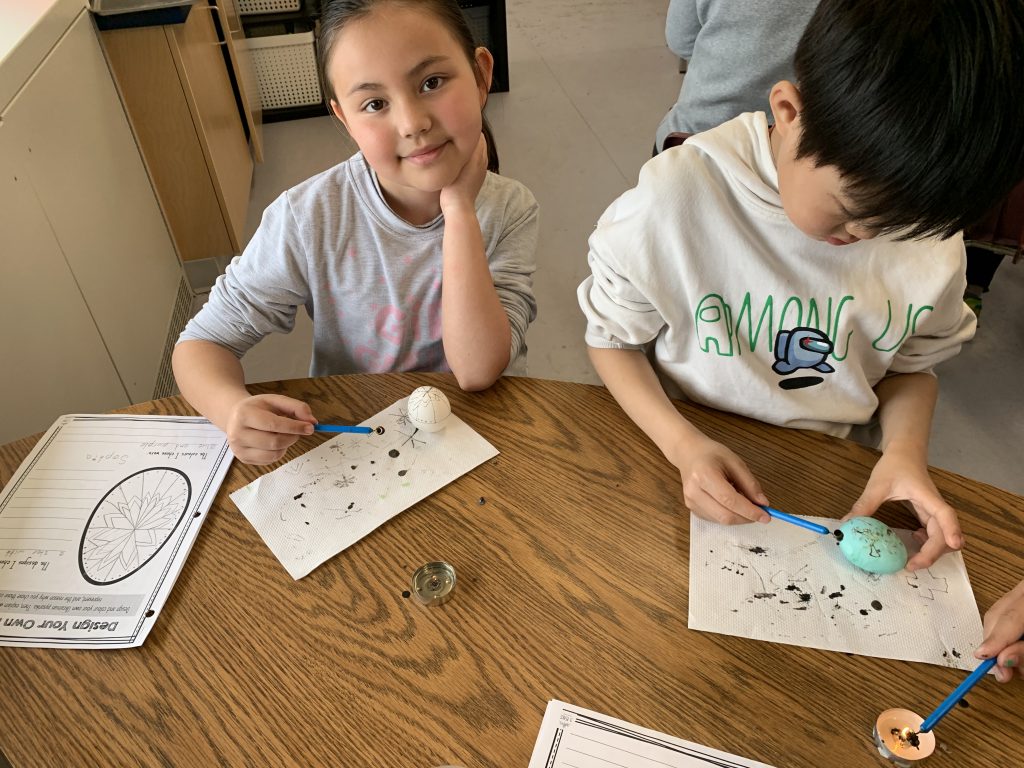
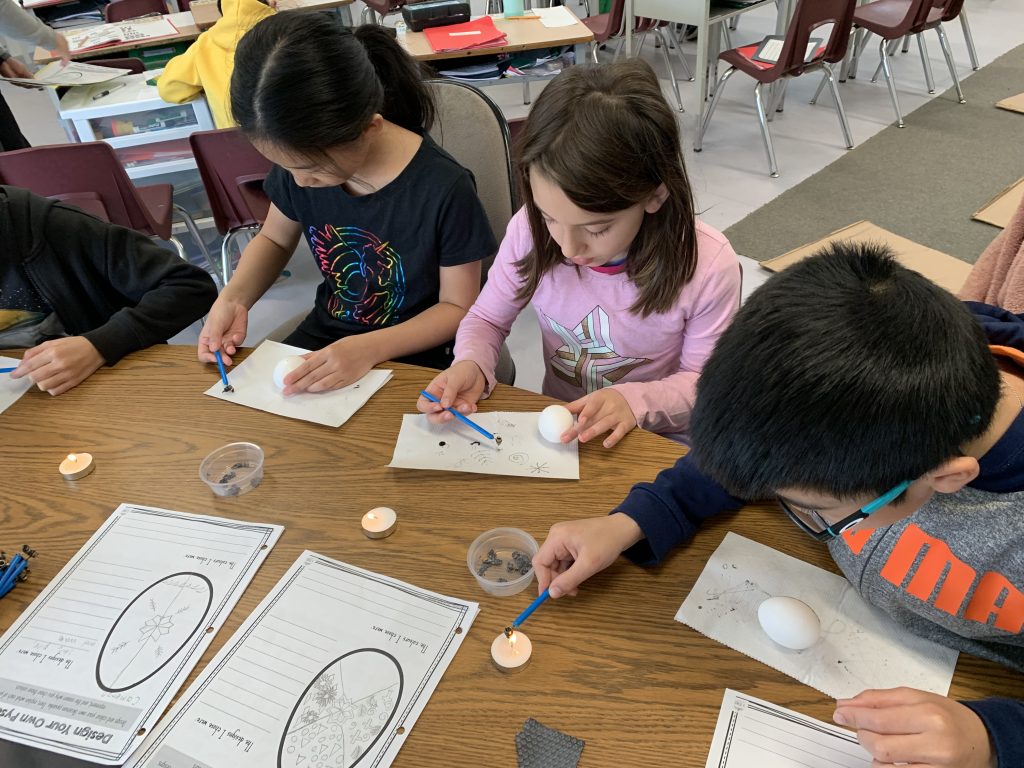
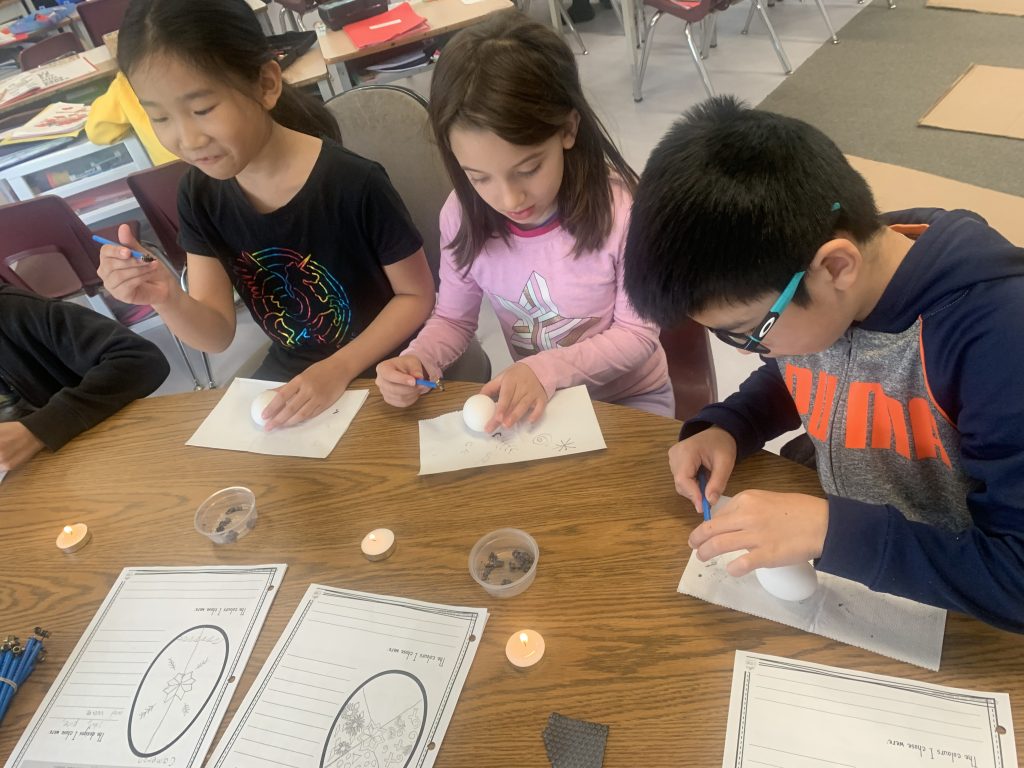
Div. 6 Parents,
In the second term overview that is about to go home with the recent report card, I mentioned that this term, the students had been involved in dialogical learning/Philosophical Discussions to enhance Critical and Reflective thinking (Core Competencies). I used this approach in our Friendship Unit, using three anchor picture books as a jumping-off point to reflective discussions. Below you will find some links to videos and some information about this approach that, as an educator, I found compelling and grounded. I ‘listened to learn’ and found the students’ perspectives, as they discussed their opinions and thoughts, engaging.
For me, the journey started on the October pro-d day this year:
Presenter:
“Why Teach Philosophy for Children”, Dr. Susan T. Gardner (Capilano University)
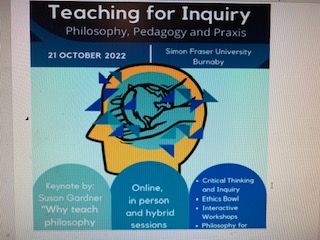
And, just in case you’re thinking what I was thinking, “this all seems a bit high brow for young kids”, I came across a video (link below) that captured my imagination and made the teaching approach and reason for it, relatable. The magic in the video isn’t in the adult speakers-it’s in watching the clips of the young children, in class, as they discussed the picture books presented to them.
I also found this Ted Talk: Dr. Sara Goering: Philosophy for Kids: “Sparking a Love of Learning” very helpful in understanding the importance of discussion, dialogue, and philosophy in the development of critical thinking skills.
Goals of Philosophy with kids:
- Enhance Cognitive Skills, critical thinking,
- Learn to Build an argument
- Evaluate an argument using logic
- How to Respond to objections to their positions
- Think Creatively
- Behavioural Skills: converse with peers, listen to them carefully, take them seriously, and disagree with them without fighting or feeling hurt
- Philosophical Skills: think for themselves, realize that questions matter, language and literacy Dr. Sara Goering
“Dialogic teaching harnesses the power of talk to stimulate and extend pupils’ thinking and advance their learning and understanding. Robin Alexander
There it is in a nutshell. The three books we used had endless possibilities for perspective-taking, questioning, inferencing, and overall wonderful discussions. The simplicity of the titles can be deceiving. These books were layered with the complexity of human nature. “Norman Didn’t Do It! (Yes, He Did)” by Ryan T. Higgins, “How to Apologize” by David LaRochelle, and “I Can Help” by Reem Faruqi.
Thank you to all Div. 6 parents for providing everything necessary, from skate sizes to booster seats to filling out permission slips and, lastly providing spaces in your car. Everything fell into place perfectly this morning and the event went off without a hitch. The children were so excited and had a wonderful time. I am grateful for the support in making sure that all children could access this program.
*I will try to get a photo with everyone in the class at the next session.
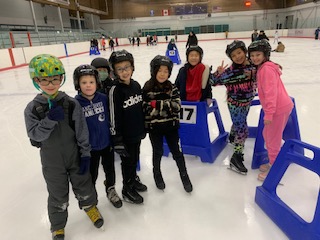
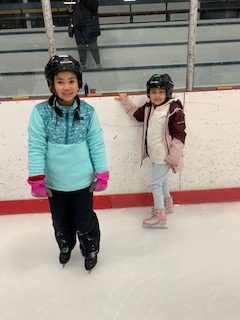
We were tired when we got back, but had a fabulous day of learning that included our final activity. This afternoon we created a food web that included salmon as an anchor piece of interconnecting food chains in our local ecosystem. Each student was given a different animal (land, air, and sea) and asked to place it and connect it to a web using arrows. It was a fascinating way to plainly see the biodiversity of our coastal environment and furthered our discussion of how energy is needed for life.
In the next few days, we will be taking a closer look at the “oolichan” fish and its historic and continued importance to local Indigenous life.
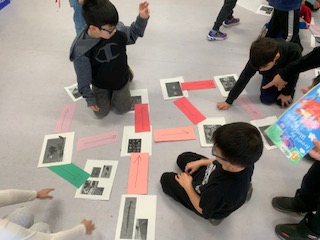
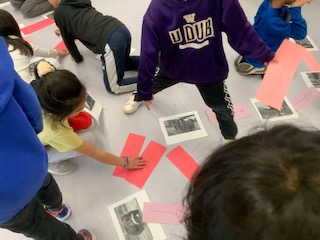
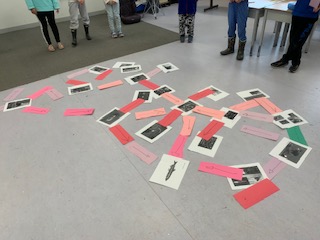
Lastly, we have been starting to take a look at freshwater sources and availability as we start to lay the groundwork for our focus on the Fraser River later this year.
I gave the students 100 pennies or counters. They were asked: if those 100 pennies represent all the water in the world, how many of those pennies would be salt water? freshwater?
Some partnerships split their pennies 50/50; others 70/30; others 60/40. No one was prepared for the real answer:
97% salt water and 3% freshwater. A collective “What?!?” rang through the class when they heard the answer. Furthermore, the 3% didn’t even represent readily available fresh water as much of it is frozen or hanging around underground.
This activity gave the students a sense of how precious our freshwater is and how important it is to conserve and protect this resource.
All of these connections will hopefully build toward giving our children the ability to express and reflect on personal or shared experiences of place (Science Curriculum). The students continue to work on their indigenous innovations projects where we were able to connect that most of the indigenous innovations/inventions came from their experience with the land. I will publish photos of that exciting group project soon.

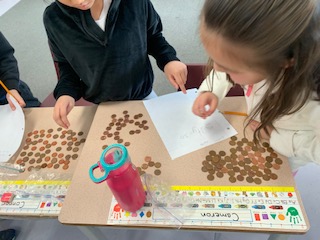
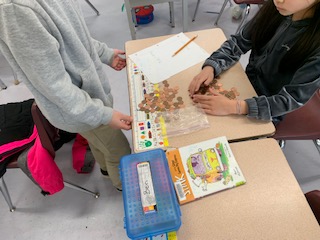
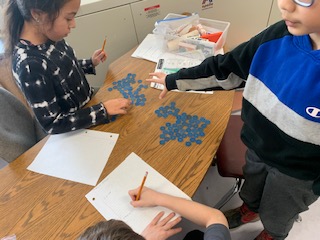
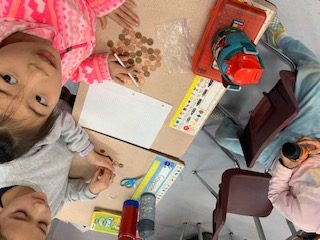
If you’re celebrating this weekend, enjoy the family time and the cultural traditions. Best Wishes for a great start to a prosperous and healthy New Year.
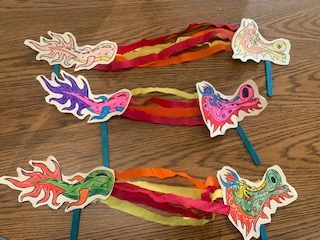
Wishing our Div. 6 families a healthy and happy 2023. Our first week back has gone well and we have made a great start in our learning. I will try and keep you posted as we go along.
Our salmon eggs arrived Wednesday. We received 55 chum eggs and have been busy learning all about an ideal salmon habitat and starting to learn about the life cycle. Have a look below at the video as the ladies dropped them into our healthy salmon habitat.
Have a look at what Div. 6 has been working on this term:
Harvest Pumpkin Art and Harvest Corn Work by Div. 6
-if you look closely to the left of the corn art, you can also see that, as part of our social-emotional learning, we wrote about what we are grateful for in our lives

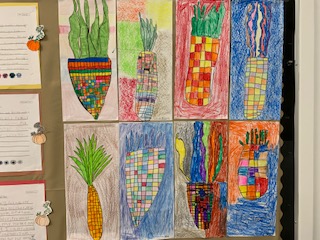
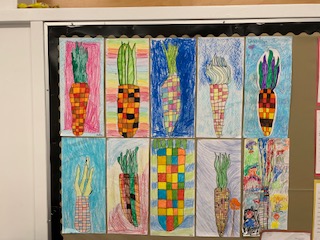
Spiders (not scientifically correct, an artistic rendering)
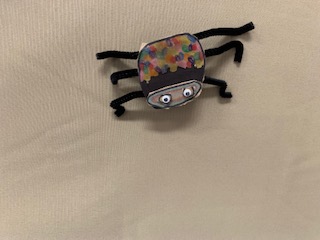
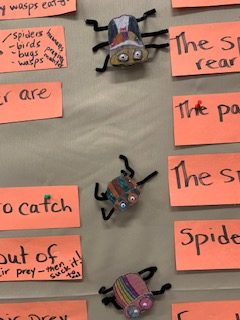
Math
Money Centres, patterning, Halloween candy graph
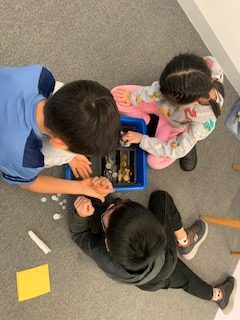
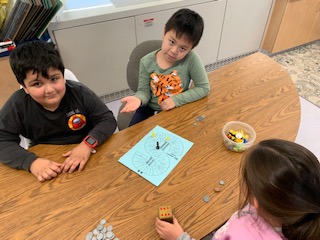
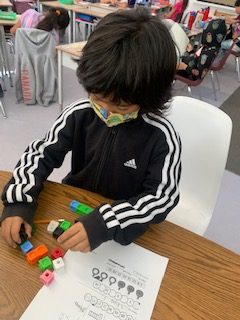
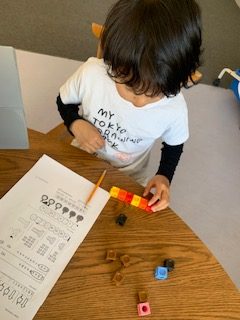
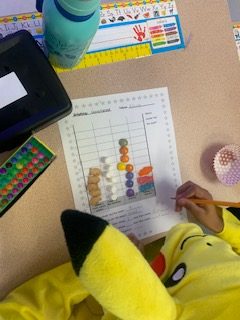
Math/Science
-measuring out a 1/4 of an acre because we know that up to 64 000 spiders can live in 1 acre. Of course, we divided 64 000 by 4.
-in Science, we are observing a local living thing to see how it changes through the seasons. Students also had to decide how they would measure and note the changes over time.
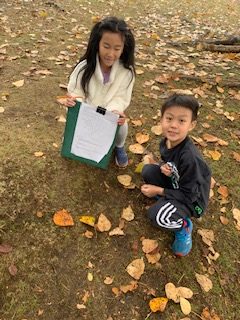
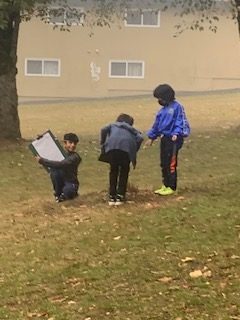
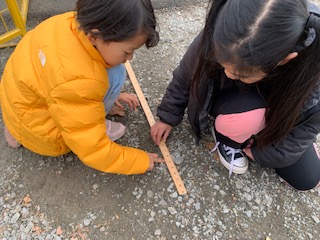
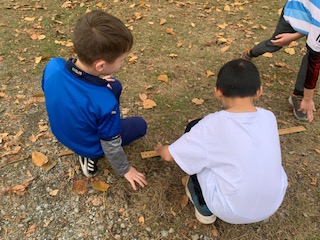
Science-spiders, our local environment/Social Studies-research process/Informational Writing
-2-3 times/week I read 1 page out of a non-fiction book (we also talked about the unique characteristics of a non-fiction book)
-the students were then asked what fact they had heard. I wrote those facts on strips of paper; reinforcing that in note-taking I could use keywords
-when we had amassed enough facts, the students were each given 2-3 facts and asked to start grouping them on the carpet. The students went about this task trying to find like categories and groups.
-after organizing the facts on the carpet, we put them on the bulletin board
-in the following days (for the introduction facts category), I had the students organize the facts within that category to put them in order
-lastly, the students practiced “writing” these facts in a short research project where they were also asked to include transition words
-Phew! What a fantastic learning journey.
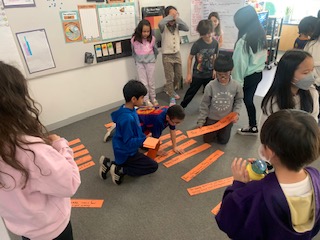
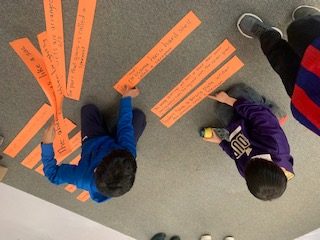
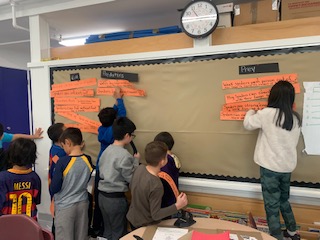
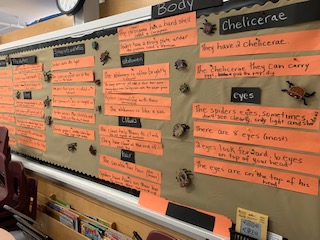
Students checked off the words they used.
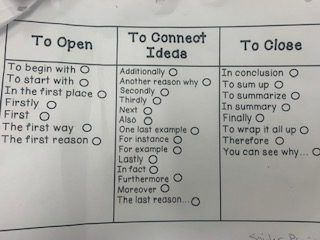
Reading, thinking, and writing about our reading
Eerie Elementary
-comparing Eerie Elementary to Parkcrest
-writing about exciting events and onomatopoeia (figurative language)
-our favorite scenes (art)
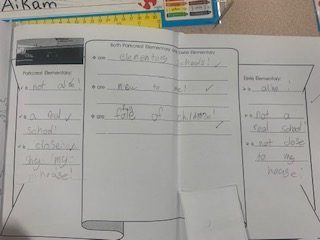
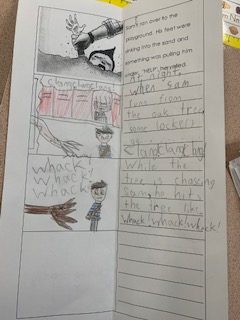
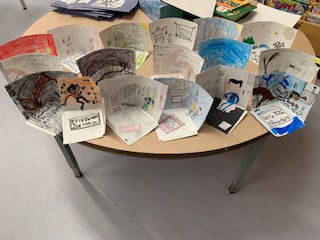
Social Emotional Learning
-learning how to plot our feelings on a mood meter and also how to regulate our energy using our “tools”. We brainstormed the tools we could use to regulate our mood from low energy to higher energy and happier. We also brainstormed the reverse. How to reduce our energy. We found out that there are a lot of overlapping tools and students made a toolbox of strategies that work best for them.
-we also continue to develop our understanding of our own identity. When we are being our best selves, what characteristics describe us at our best?
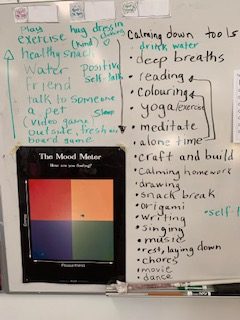
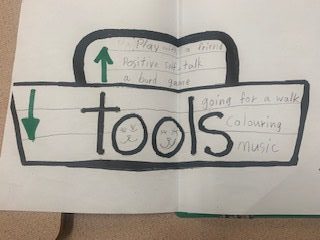
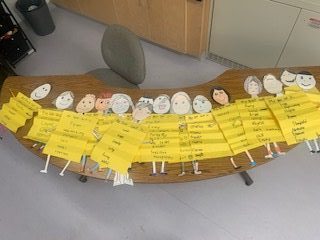

Reminder to all parent drivers to be at the school anywhere between 9:45- 9:50.
Please wait outside where the students line up for morning entry. I will bring your child and the students you are driving to you.
If you have a younger child that you are also driving, please follow your youngest child’s teacher’s directions. I will send the older sibling to the younger child’s class along with any other student(s) you may be driving.
Lastly, if your child requires a car seat and is being driven by another parent or teacher, please send the car seat in the morning.
Div. 3, 4, and 5 will be showcasing our Learning in Depth Projects. We are inviting parents and other classes to come by and see our work. Although our parents may have seen some parts during Student-Led conferences, in the upcoming weeks we will be working on our dioramas and preparing them for display. For just about all our students, dioramas are a new experience. Excited!
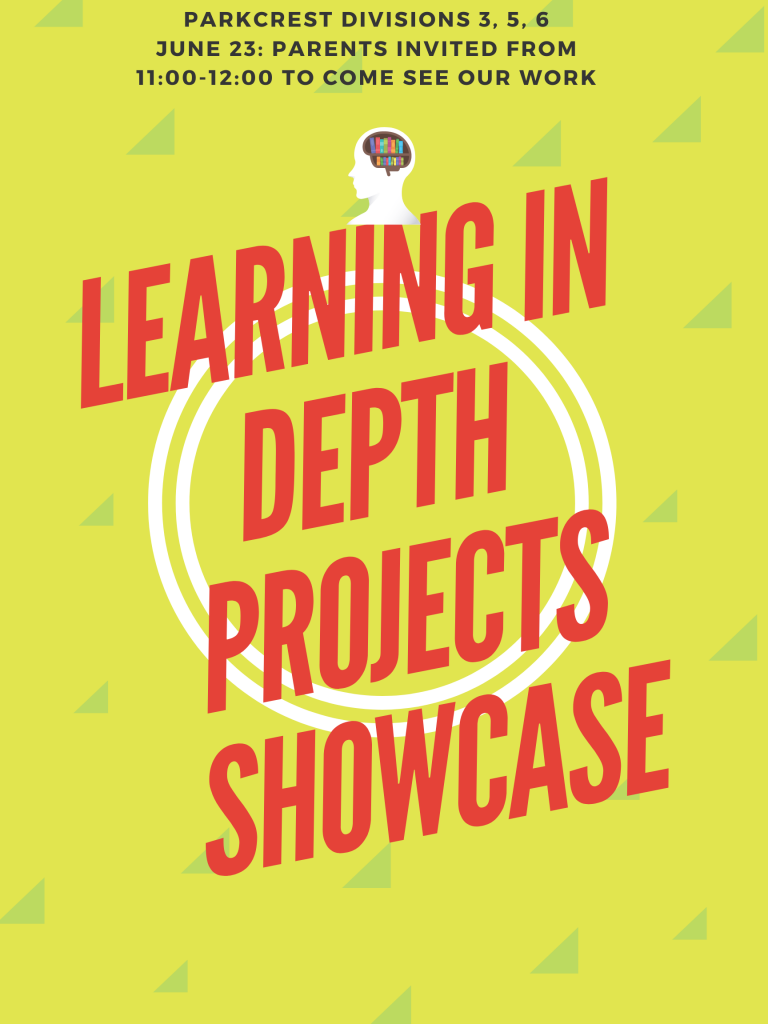
Thank you parents for your time and participation in this lunch. It was a delicious and beautiful spread of food. We ate with our eyes and our tummies. Mr. Lee had a difficult time gaining back our attention after lunch.

We had great service, too! ![]()
